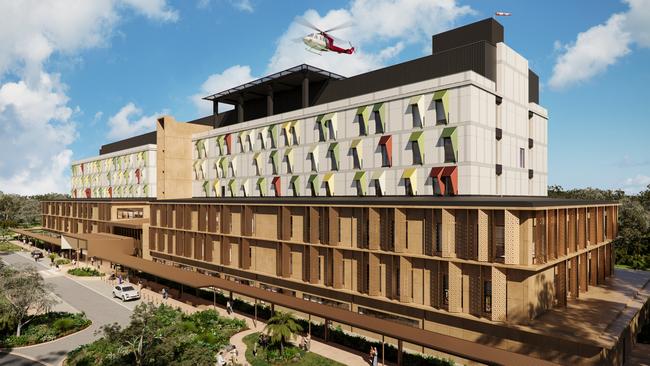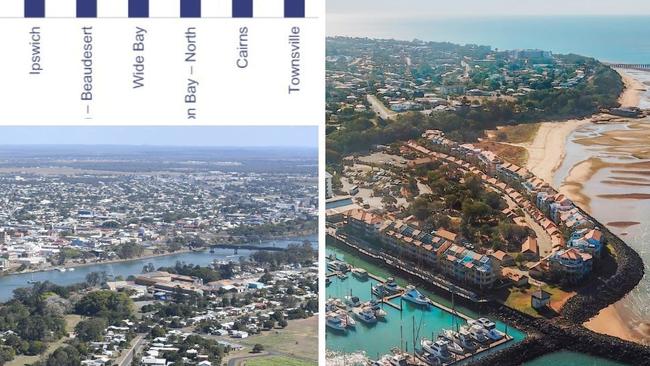Why Wide Bay has the highest death rate in Queensland
A study of mortality rates and populations across the country has revealed the death rate in Wide Bay is nearly three times higher than in inner Brisbane, but lower than parts of New South Wales, which had the highest death rate in the country.

Bundaberg
Don't miss out on the headlines from Bundaberg. Followed categories will be added to My News.
Recent data from the Australian Bureau of Statistics revealed that 57,922 deaths occurred in Australia between January and April 2024, marking a 0.9 per cent increase from the same period in 2023.
Using those numbers, “memorial and cremation experts” at Affordable Urns - a business in the business of death - this week calculated which Australian regions had the highest and lowest death rates in 2024.
In Queensland, the study concluded that the Wide Bay had the highest death rate and inner Brisbane had the lowest death rate.
It said significant disparities in death rates across the regions highlighted the impact of demographics, healthcare access, and lifestyle choices.
The Queensland Health website states that in 2022, 38,160 Queensland residents died, with an age-standardised death rate of 5.6 per 1000 people.

Females had a lower standardised death rate (4.7) than males (6.7), but the standardised Qld death rate was similar to the Australian rate (5.5).
Median age at death in Queensland in 2022 was 81.1 years (78.9 for males and 83.8 years for females) compared to 82.2 years for Australia overall. More than a third (36.9%) of deaths were of people 85 years and older.
In 2022, there were 283 infants deaths (defined as deaths before 12 months of age), resulting in an infant mortality rate of 4.6, higher than the national rate of 3.2.
Queensland mortality rates have declined steadily over the past several decades, a trend similarly reflected for the Australian population as whole. In 1971, the age standardised mortality rate for Queensland was 12.7, declining to 5.2 in 2021. In 2022, this increased to 5.6 per 1000 people.
Top 10 Australian Regions With the Highest Death Rates
The Affordable Urns’ researchers calculated death rates based on recorded population data and death numbers by region for the year 2023.
The death rate is expressed as the number of deaths per 1000 people within a specific time period.
The study revealed that Wide Bay had the highest death rate in Queensland of 10.98 and inner Brisbane had the lowest death rate of 3.87, followed by Moreton Bay South which had a death rate of 4.69.
The regions with the highest death rates tended to be in more rural and remote areas, particularly in parts of New South Wales, Victoria, and Queensland, it said.
Across Australia, the Mid North Coast of New South Wales topped the list with a death rate of 12.95.
This region is known for its ageing population, which can contribute to higher mortality rates, the report said.
“The lifestyle in this area, often characterised by rural living, might limit access to advanced healthcare facilities, potentially impacting health outcomes.”
Second highest in Australia was the Southern Highlands and Shoalhaven with a death rate of 11.36.
“This area is similarly marked by an older demographic, which naturally leads to higher death rates. The rural setting may also mean fewer healthcare resources, impacting the management of chronic diseases prevalent among the elderly,” the study noted.
Victoria’s North West region followed closely with a death rate of 11.16.

“This area faces socio-economic challenges that can affect health outcomes. Limited access to healthcare services and a higher prevalence of lifestyle-related diseases, such as heart disease and diabetes, are contributing factors,” says Affordable Urns.
Top 10 Australian Regions With the Lowest Death Rates
The regions with the lowest death rates are generally in urban and inner-city areas, according to the study.
Brisbane Inner City boasts the lowest death rate at 3.87.
“This urban area benefits from excellent healthcare facilities and a younger, more affluent population, which generally leads to better health outcomes,” the report claimed.
The Australian Capital Territory (ACT) followed with a death rate of 4.02.
“As the seat of government, the ACT has a well-educated and relatively young population. The region’s robust healthcare infrastructure and health-conscious lifestyle contribute to its low death rate.”
Sydney’s City and Inner South region had a death rate of 4.17.
“The area really benefits from being a metropolitan hub that has access to advanced medical facilities as well as a diverse population that engages in healthier lifestyles. The availability of healthcare services and a focus on wellness play a crucial role in maintaining low mortality rates.”
“These death rate disparities highlight complex socioeconomic and environmental factors at play. Urban areas often have lower death rates due to the concentration of younger, healthier individuals drawn to city job markets, as well as better access to specialized healthcare facilities. However, this can mask health inequalities within cities themselves,” an Affordable Urns spokesperson said.
“Rural regions face unique challenges contributing to higher mortality rates, including limited access to preventive care, longer emergency response times, and higher rates of occupational hazards in industries like agriculture and mining. Environmental factors such as exposure to agricultural chemicals and air quality issues in mining areas can also impact long-term health outcomes.

“To address these disparities, we need multifaceted approaches. This could include telemedicine initiatives to improve rural healthcare access, incentives for healthcare professionals to work in underserved areas, and targeted public health campaigns addressing region-specific risk factors. Additionally, improving social determinants of health - such as education, housing, and economic opportunities - is crucial for long-term mortality rate reduction in high-risk regions.”
Death rates were analyzed using the number of deaths per region available here: ABS.gov
The research used recorded population data and death numbers by region for the year 2023.
Death rate was calculated based on the number of deaths divided by the total population of an area within a specific time period and is usually calculated per 1000 people. It is a statistical indicator used to measure the number of deaths per 1000 people in one year.




